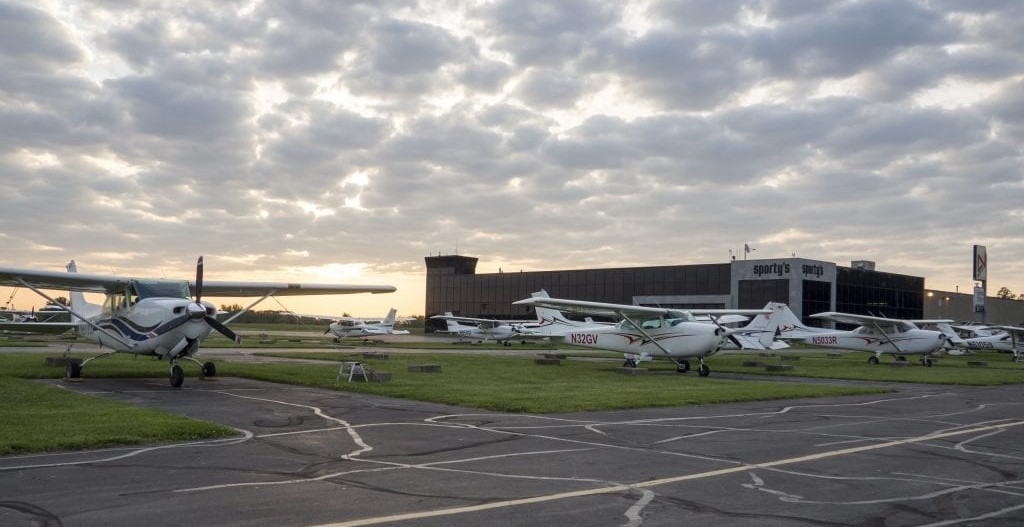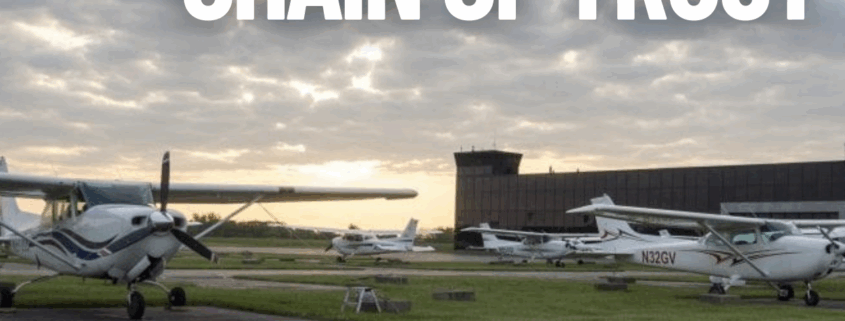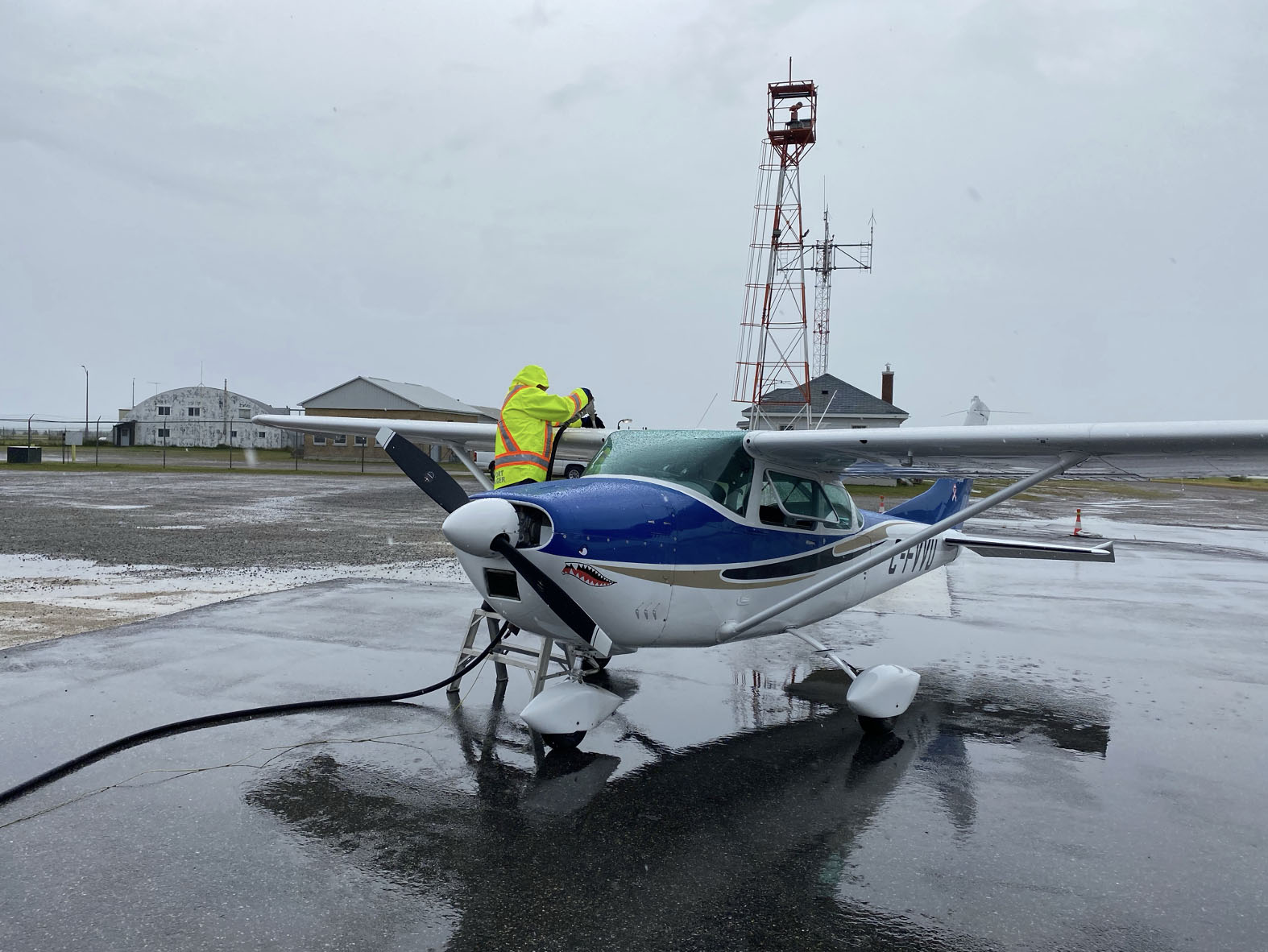|
Getting your Trinity Audio player ready...
|
If there is one aspect of general aviation I’ve learned over my relatively short stint aloft, it’s that the safety of any flight is not just dependent solely on the decisions I make, but also on the ones others have made for me—without my knowledge or even consent. In fact, all of general aviation relies on an implicit chain of trust that, when broken, can and does result in dire consequences.
Forged In Battle
The very first link in this chain is, of course, between you and your CFI—a bond forged over the course of you getting your ticket and one that can have life-or-death consequences as a result. My primary instructor used to joke, “Every student tries to commit involuntary manslaughter when they first take flight lessons. Eventually, they get good enough to commit suicide. It is my job to ensure neither of these is a probable outcome.” In other words, he understood the enormous responsibility he had, as well as the implicit trust that students had in him.
In fact, it is your primary CFI that lays down the foundation on which your entire aviation career is based. Ask any pilot and they can tell you what their first CFI was “big on” and recite verbatim the exact pithy words of wisdom (“gas, grass, altitude”) their CFI used to repeat ad nauseum during each lesson.
Unfortunately, there are many cases where this link breaks down with horrific results. For example, a few years ago, a CFI was caught on SnapChat berating a student before they flew into a thunderstorm and lost control of the airplane, killing everyone on board. Similarly, an uncertified flight instructor gave illegal lessons to a student before crashing on takeoff, injuring himself and killing the student in the process. He now faces manslaughter charges.
Of course, I would be remiss not to point out that this relationship is bidirectional as well; CFIs expect students to be accountable for their actions and take each lesson seriously too. Recently, a CFI shared on Reddit an incident where a student retaliated against her by pulling the mixture knob out in flight on purpose. And although the CFI recovered quickly and no one got hurt, the student’s action was a clear violation of trust and put into question if this person should be allowed to fly to begin with.
But Do You Trust It?

At my flight school, there was a plane on the line that no CFI trusted.
“Airworthy” is a term that is clearly defined in the FARs—yet often feels anything but. Otherwise, why would 91.7(b) even exist? If you’re a renter, then you know exactly where I’m going with this.
Here’s a personal story to illustrate my point: At my flight school, there was a plane on the line that no CFI trusted. So much so that my CFI told me under no circumstance should I rent it for my solo cross country. During several flights, its engine would occasionally have a sudden power loss and then instantly recover. It was reported to the maintenance shop several times but could not be reproduced. During preflight, run-up was nominal, and most flights were uneventful. Knowing all this, would you rent this plane to take your family on a long cross-country trip? Right. So, what do you do when a plane is technically airworthy but perhaps not mission-worthy™?
Talk to your A&P, of course, but sometimes you don’t have access to your A&P—think at a school or a club. In the latter case, you most likely have a maintenance officer as a surrogate, who keeps the membership up to date on the latest squawks and works directly with the shop to get these issues resolved. And having a good rapport with this person is absolutely vital, since that little sticker you read in the plane’s logbook usually has a much bigger backstory behind it than what the A&P wrote.
In fact, I submit that the implicit trust you have in your maintenance officer (or equivalent) has far more value than the ARROW documents in the plane—the latter determines if the plane can legally fly, while the former ensures you actually want to. There’s a difference.
It Takes A Village
By far the biggest link is that of the GA community at large. In John Zimmerman’s great article, The aviation community is alive and well, you’re definitely not alone up there. And I believe that one of the attributes that makes our community so special is that we are all looking out for each other; it’s what makes the whole concept of see and avoid even possible. The same is true with our amazing controllers across the NAS, who work tirelessly every day to keep us out of harm’s way even when we aren’t talking to them. We put a lot of trust as pilots in the system itself.
Let me leave you with one more story: After landing at Binghamton Airport (KBGM) with a friend to pick up a package (honeybees!), the mixture cable snapped as I was leaning out for taxi. A story in itself, but I did get the mixture cable “resolved” so that the plane could fly again (A&P wired it full rich as a stopgap solution). It was a beautiful, albeit hot VFR day and I of course picked up flight-following soon after departure. I did inform the controller of what had happened when I checked in and that I couldn’t climb above 3000 as a result. A funny thing then happened though: I was vectored a few times for traffic due to my altitude. Each time, the vectors put me directly over an airport. Coincidence? Chain of trust.
- Chain of Trust - August 11, 2025
- Friday Photo: B-29 Superfortress Cockpit - August 8, 2025
- Friday Photo: Thunderbirds - July 11, 2025






I also had an engine power issue that couldn’t be duplicated. On run up it was fine. Take off run the engine stumbling down the runway. 2 aborted take offs. Finally the 3rd time was the charm. They never did find out what the problem was. Me thinks perhaps it was vapor lock and or possibly water in the fuel. It was a very hot day I experienced this. Never happened again. Cessna 172.
Wonder if it was heat soak? But you got the gist of the article though!
I started learning to fly 59 years ago. My first two instructors are still around, as is the Auster, and so am I.
I feel eternally grateful for that early discipline.
That’s great John!
Several good points here! My CFI was my older brother, a corporate pilot, with thousands of hours. His favorite phrase was “what the hell was that!! “
That should be the title of an article! :-)
Great article. Thanks.